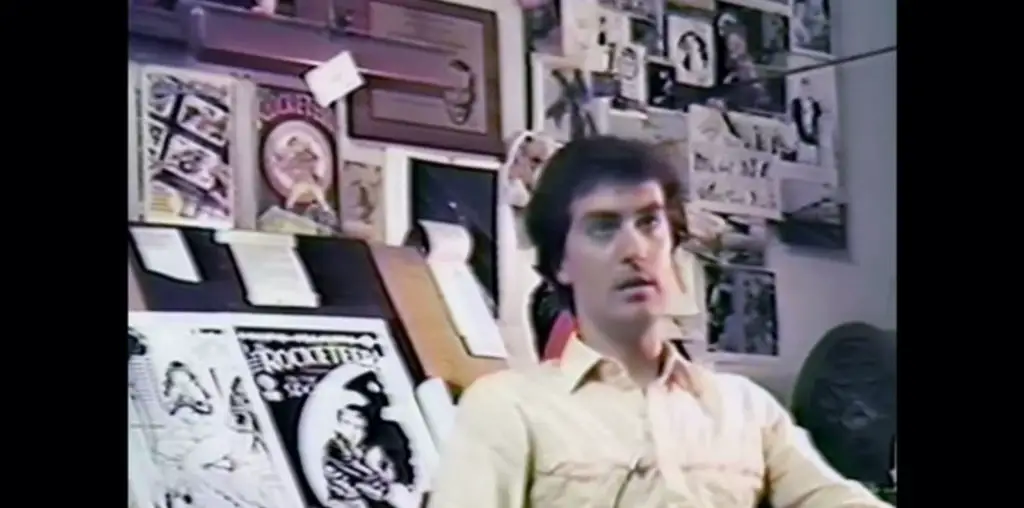
One of my favorite films that came out of 2020’s festival season is Fugitive Dreams, which I was fortunate enough to see during Fantasia International Film Festival, and where it most recently screened at Austin Film Festival. Fugitive Dreams is a subtly psychedelic whisper of a road movie starring actors who are usually more at home on a Broadway stage, such as April Matthis, O-Lan Jones, and David Patrick Kelly. Neulander himself directed the original stage production, written by Caridad Svich. We talk about adapting a play to the screen and all that entails, as well as Jason’s artistic influences and much, much more. Read on.
I love Fugitive Dreams. It’s one of the most unique films I’ve seen in a long time. It’s focused on the downtrodden, and I’m wondering how you personally identify with these characters.
Jason Neulander: Oh, man, you’re the first person to ask me that question. For me, identifying these characters is less them as, say, homeless people, because I’ve never been a homeless person. It is about the human condition of the mistakes that we make and our capacity to figure out how to get past our own mistakes and maybe understand or forgive others’ mistakes. When I originally experienced the play, which was through reading it, back in the early 2000s, I really found myself…the scene that just sucked me in and wouldn’t let me go was the scene that became the scene in the woods in the film. In the play, how that scene unfolds and what happens is actually pretty different.
Still, the idea of John being baited into doing something that is horrifically unforgivable, and yet within the way the play was structured and how John and Mary interact, we find ourselves able to understand and forgive John. I felt like that is something that when I was thinking about the feature film that I wanted to make as my debut, which I got very serious about that in 2016. I re-read the play script and realized just how important that idea of forgiveness is right now. And how important empathy is right now. There isn’t a person out there that isn’t saying “love thy brother.” Yet, somehow, we all seem to be hating our brother. Mary and John are such opposites in so many ways, and for me interacting with those characters, I find myself identifying with both. Maybe because I got my start doing all this as an actor back when I was a kid. So I went from an actor to becoming a director and then went from director to becoming a writer. It all goes back to acting and finding myself in the hands of the characters. When I really connect with a story, it’s really about connecting with the characters within that story. Does that answer your question?

“…how important that idea of forgiveness is right now. And how important empathy is right now.”
Yeah, in a roundabout way, yeah. I definitely think that everyone could use a little more empathy right now. It would make the world a lot easier to deal with. So, this film was originally a play, so I want to know, was it difficult to change the scale of the work from the stage to the screen, or was there kind of a feeling of freedom to it?
Well, there was definitely a freedom, and it was difficult at the same time. One of the things that I discovered in the process of adaptation, I guess pretty early, was, in the play—the play was very self-awarely theatrical. It’s in some ways reminiscent of Waiting For Godot. On the one hand, you’re watching these characters in this presumed wasteland, and on the other hand, you never forget that they’re characters on a stage. Because of that, in the play, Mary and John are trapped together from moment one. If they leave the stage, their characters ostensibly cease to exist, and actually, within the structure of the play, that’s what happens. It’s pretty cool, actually. In a film, it doesn’t work that way. One of the things I realized very early, which is a giant difference between a play and a movie, was that when Mary meets John—first of all, I really literalized Mary’s suicide attempt, in the play, it’s much more oblique, it’s through this song that you get a hint of in the movie, but you don’t actually see her attempting suicide, she sings about attempting suicide. John shows up, and the two starts talking to one another, and Mary interacts with John immediately. It’s the same exact number of lines in the play, I’m pretty sure, but I realized in the film, 1. I need to literalize that act of attempted suicide. It’s so foundational to who Mary’s character was, I need it not to be oblique at all. Also, as someone who is suicidal, Mary is clearly on the run from humanity. If a human interacts with her, her first instinct is going to be to run, and her next instinct is going to be to want to hit. That opened up the whole world of the film. So all of a sudden, Mary can go anywhere. The limitation for both of these characters is they only have as vehicles for motion are their feet. As fast as she can run, John can keep up with her. That’s going to end up being the foundation of their relationship. Within that, I was like, “Oh, what if John thinks that he’s hurt Mary?” What motivates John to chase after her? So he takes the blame for injuring her. Anyway, that’s a very specific example of the thought process that went into taking a play and turning that into a film. It took me about a year to adapt the stage play to the screenplay.

